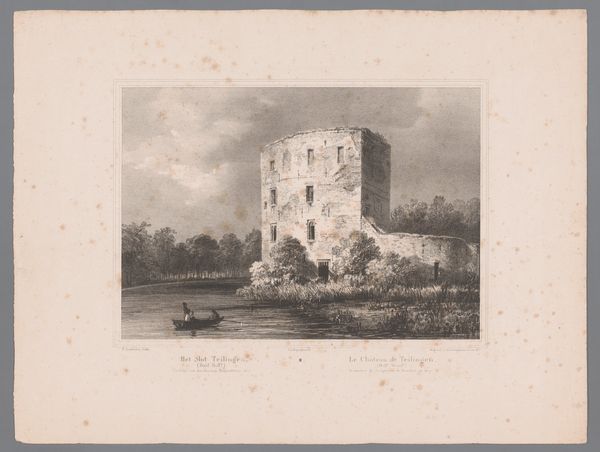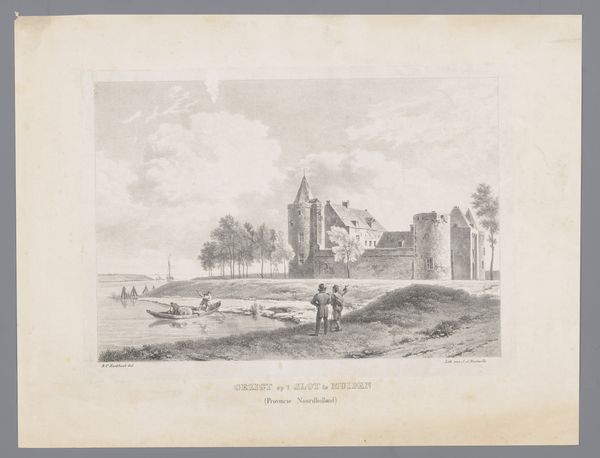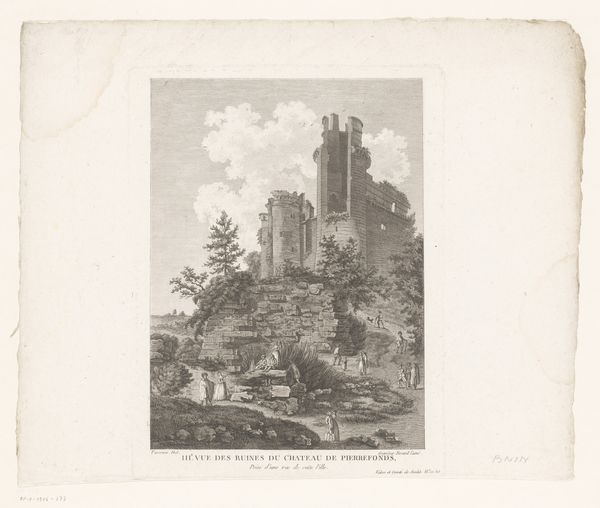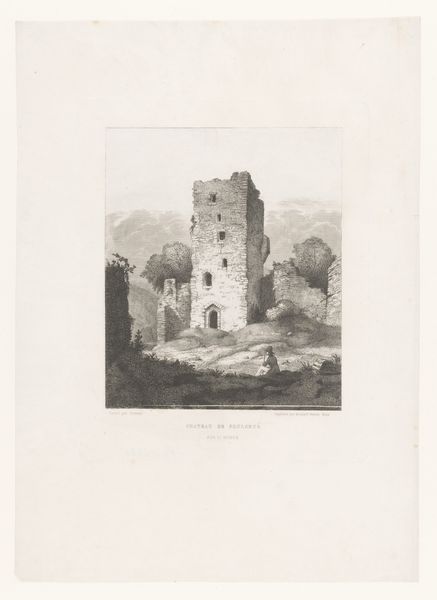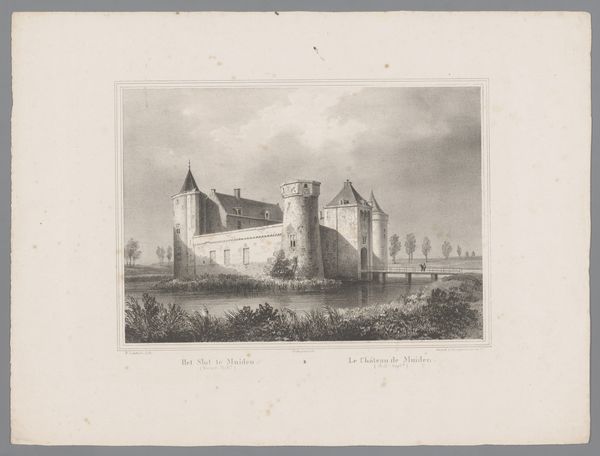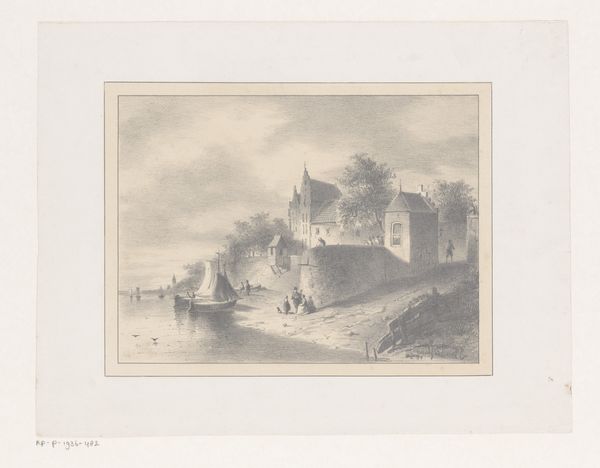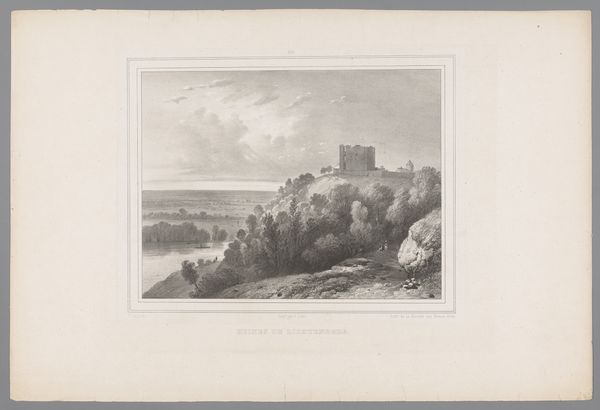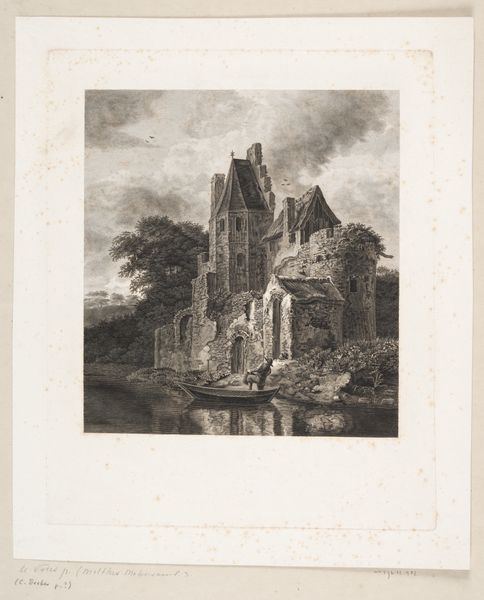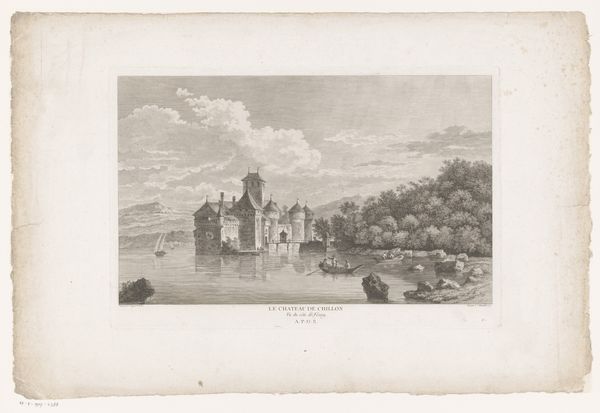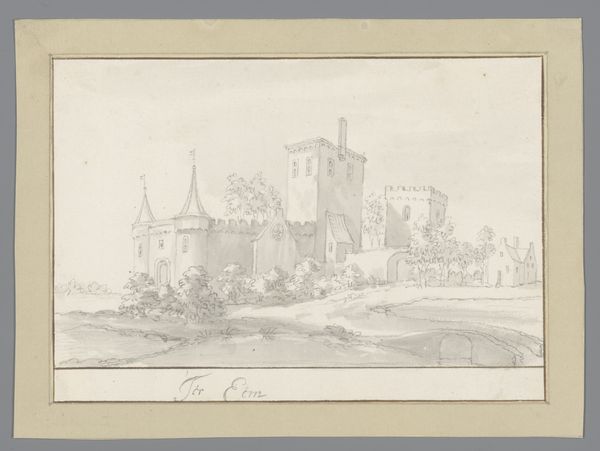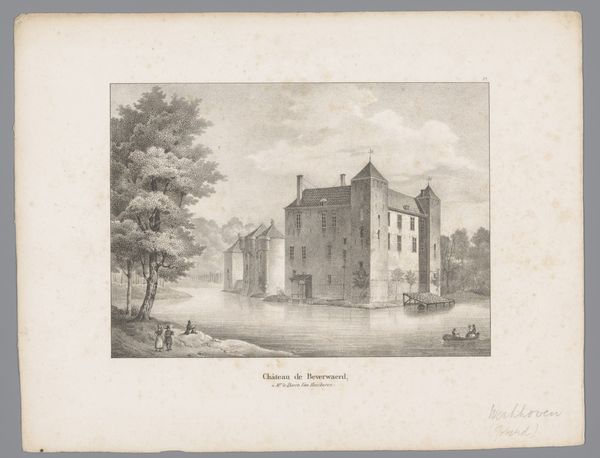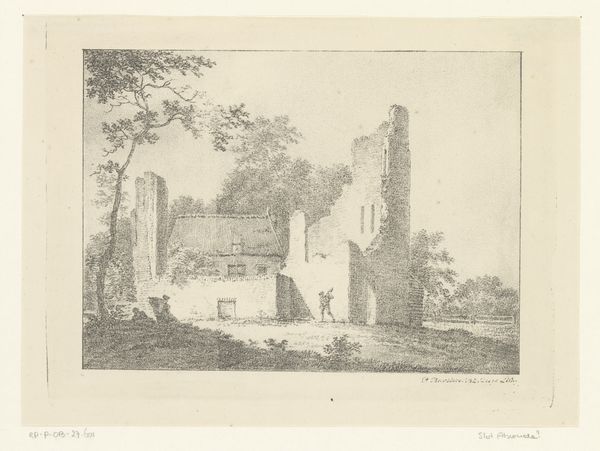
print, etching, engraving, architecture
# print
#
etching
#
landscape
#
house
#
engraving
#
architecture
Dimensions: height 274 mm, width 361 mm
Copyright: Rijks Museum: Open Domain
Curator: Here we have Paulus Lauters's "View of Castle Duurstede," an engraving and etching dating from sometime between 1827 and 1875. It’s currently held in the Rijksmuseum collection. Editor: The texture is amazing; look at how much depth and variety he achieves. The stone appears rough-hewn, and I appreciate seeing the clear attention to detail and the layering effects of etching, creating those shadowy contrasts. Curator: Absolutely, and this was likely intended for a broader audience, given the relatively accessible nature of prints at the time. The ruins, a Romantic trope, play into a sense of history, of a fading aristocratic power perhaps being overtaken by nature, certainly influencing the perception of architecture. Editor: It makes you consider the amount of labor involved, too. How many impressions could he make from one plate, and who was doing the printing and selling? And let's also talk about the composition itself—I mean, look at the different depths here: water, greenery, and the house. Curator: Exactly! The print medium allowed artists to disseminate their work widely. It reflects how artistic ideas and images could circulate among different social classes. How would such a work reinforce existing social values, or maybe challenge them? Consider, were images of crumbling castles designed to reassure an emergent bourgeoisie? Editor: That’s valid, yet it really calls out the way labor went into producing all this so a large segment of society may receive it. The print could be easily circulated, sure, but still involves so much handling, physically touching each surface to produce copies. What kinds of social relations are represented, right? Curator: Right. So, it seems it embodies nostalgia but simultaneously demonstrates this wider dispersal due to cheaper material costs. The piece’s cultural power resides in both these factors. Editor: Overall, observing Lauters' use of varied texture truly deepens my sense of material qualities here, with attention paid towards not only the final image that folks see now, but also each impression that viewers held originally back then too.
Comments
No comments
Be the first to comment and join the conversation on the ultimate creative platform.
